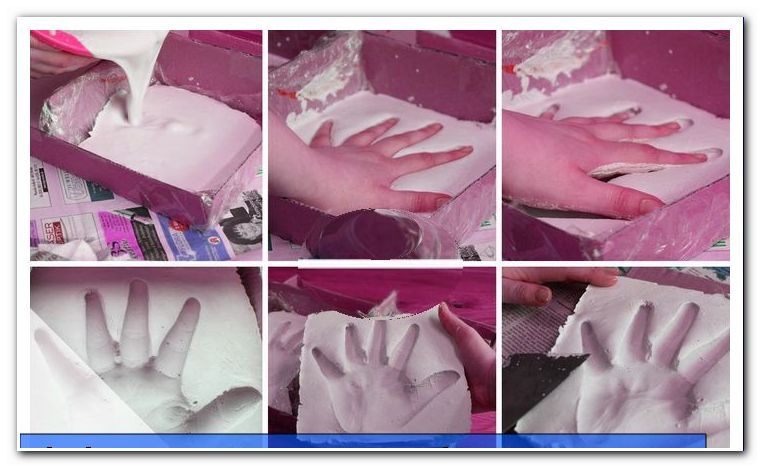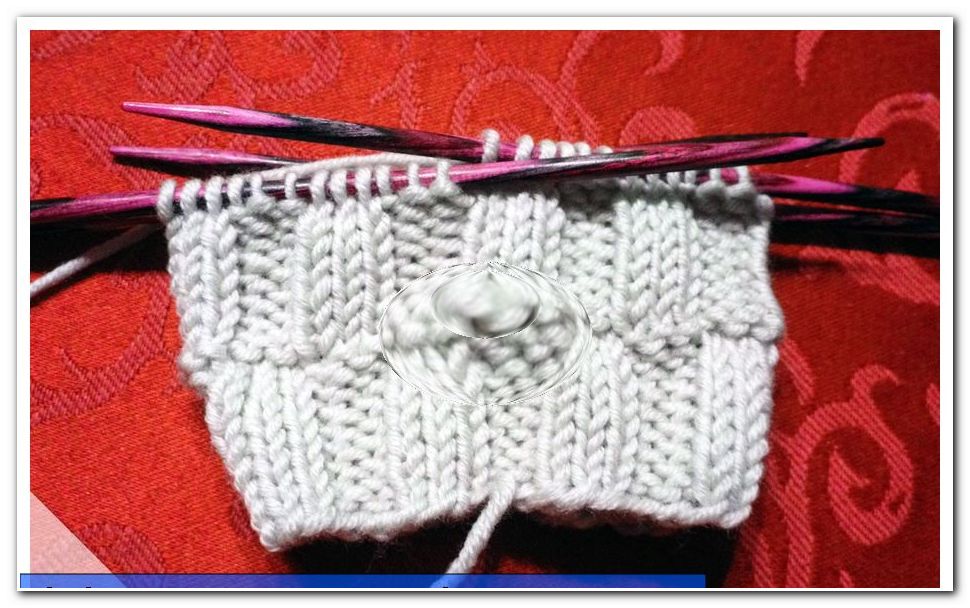Sewing triangular cloth from muslin - instructions

- Sew triangular scarf
- The material selection
- The amount of material
- The cut
- variations
- Tips
- Quick guide
Especially in the transitional period and on cooler evenings in summer, it pays off to protect the neck, to prevent annoying colds. After I've already written you a tutorial on how to sew a triangle scarf made of jersey, today I'd like to focus on a fabric that has long outgrown a trend fabric for a season: the muslin.
Sew triangular scarf
In this guide you will learn all about this fabric, its properties and qualities, how to sew a triangular scarf out of this miracle fabric (in two variants - one-ply and two-ply) as well as different possibilities of the hem.
Difficulty level 1/5
(suitable for beginners)
Material costs 1/5
(depending on the fabric selection between 0, - Euro from the remaining utilization and 30, - Euro)
Time expenditure 1/5
(including pattern about 30 minutes - depending on hem variant and exercise)
The material selection
As mentioned in the introduction, this time I decided to go for a certain type of fabric to sew the triangular cloth : the muslin . But what is that matter at all ">

Double gauze and muslin are technically two different fabrics. In fact, Double Gauze is more akin to gauze. Due to the similar appearance, the substances are traded by the providers but also under both names. Double Gauze consists of two very thin, translucent tissue layers, which are only selectively connected.
Muslin is a fine woven fabric that is mostly 100% cotton . Traditionally, it was also made of wool, nowadays there are already some viscose variants on the market. In rare cases it is also produced of high quality silk. He is always loosely woven and easy in plain weave. He is very light and airy with high suction power and easy care. Cotton is very robust and can also be boiled. It can be ironed, but it is a matter of taste for finished cloths, since this type of fabric can not be ironed - depending on the design - very well. He then gets a crash optics .
In order to sew my triangular scarf I decided on a printed flower design . I sew it in two layers in this manual, but then show by means of fabric remnants, how the different seams are implemented, if it is sewn in one layer. I bought the fabric here: thread pirates.
The amount of material
The amount of material and the pattern
Whether you sew one or two layers, you need the same basic amount of fabric. Especially if the subject should be aligned towards the front corner, the material requirement may increase again. If you want to make it easy and the motif does not have to be horizontal, just take the fabric width in the length. Most are 140 cm .
Since this fabric is very light, it does not matter if the cloth gets a little bit bigger. Even smaller sizes are good to wear, but in adults it should not be less than 1 m side, otherwise it may be too short to wrap it nicely.
The cut
I simply lay the fabric diagonally together, right to right, with the motif sides to each other.

TIP: If you want to sew in one layer, halve the fabric diagonally. Pay attention to how the motif should be at the end!
It is sewn:
With pins I now fix the two open edges and sew together with some distance to the edge.

TIP: The seam allowance can also be shortened and serged to the desired width beforehand, but I do like to do it retrospectively. (Fig 4) The overlock machine can also be used here.
Be sure to keep an opening of about 10 cm !

I sew each beginning and end, obliquely cut off the corners, sew over the seam allowances and turn the cloth. The corners should now be formed as nicely as possible.
To close the turning opening, I either use the mattress stitch (also called ladder stitch or magic stitch), in which there is no seam at all from the outside - the instructions can be found here (also when closing a turn-around opening): Dinkelkissen-selbst- do.
For the second variant, I put the seam allowances of the turning opening inside and iron over it, so that there is a nice edge, which I close with a pin.

Then I sew around the entire cloth around the edges and close the turning opening.

TIP: The turnaround should be closer to one of the tips and not at the right angle of the triangle, as this spot is almost always in focus. The seams should also start and end on the long straight side or at the acute angles.
variations
For the single-ply variant, there are several options for the hem.
The simplest way is to simply line the edge with an overlock sewing machine . You can either use matching yarn or a contrasting color to set accents.
Another possibility is a usual hem . To do this, iron the edges in the desired width twice inward.

Take off and then tap once all the way around.

If you have a matching rolled seam foot to your sewing machine, you can use it as well. This creates the typical hem that you know from muslin merchandise. A very thin, rolled-up hem . Please read the instructions of your sewing machine in order to use it correctly.
I still like to iron out the edges here. I hit the edges twice very narrow. The sewing result will be so much more beautiful. I also steppe the first stitches with the normal presser foot and then thread them in. It takes a bit of practice, but then it is quite easy to do.
Tips
Get creative wearing the cloth so you can take full advantage of it. Wear it as a shawl over a sleeveless dress.

As a scarf to the transition jacket.

Or as an accessory over a thin knit sweater in the middle.

Surely you come up with more wearing options, these are my favorites "> Quick guide
01. Fold fabric diagonally or cut.
02. Fold fabric (or sew and seam the two layers together).
03. For the two-ply variant, avoid the turning opening.
04. Close the turning opening by hand or stitch around once again with a short edge.
05. And done!
The twisted pirate




